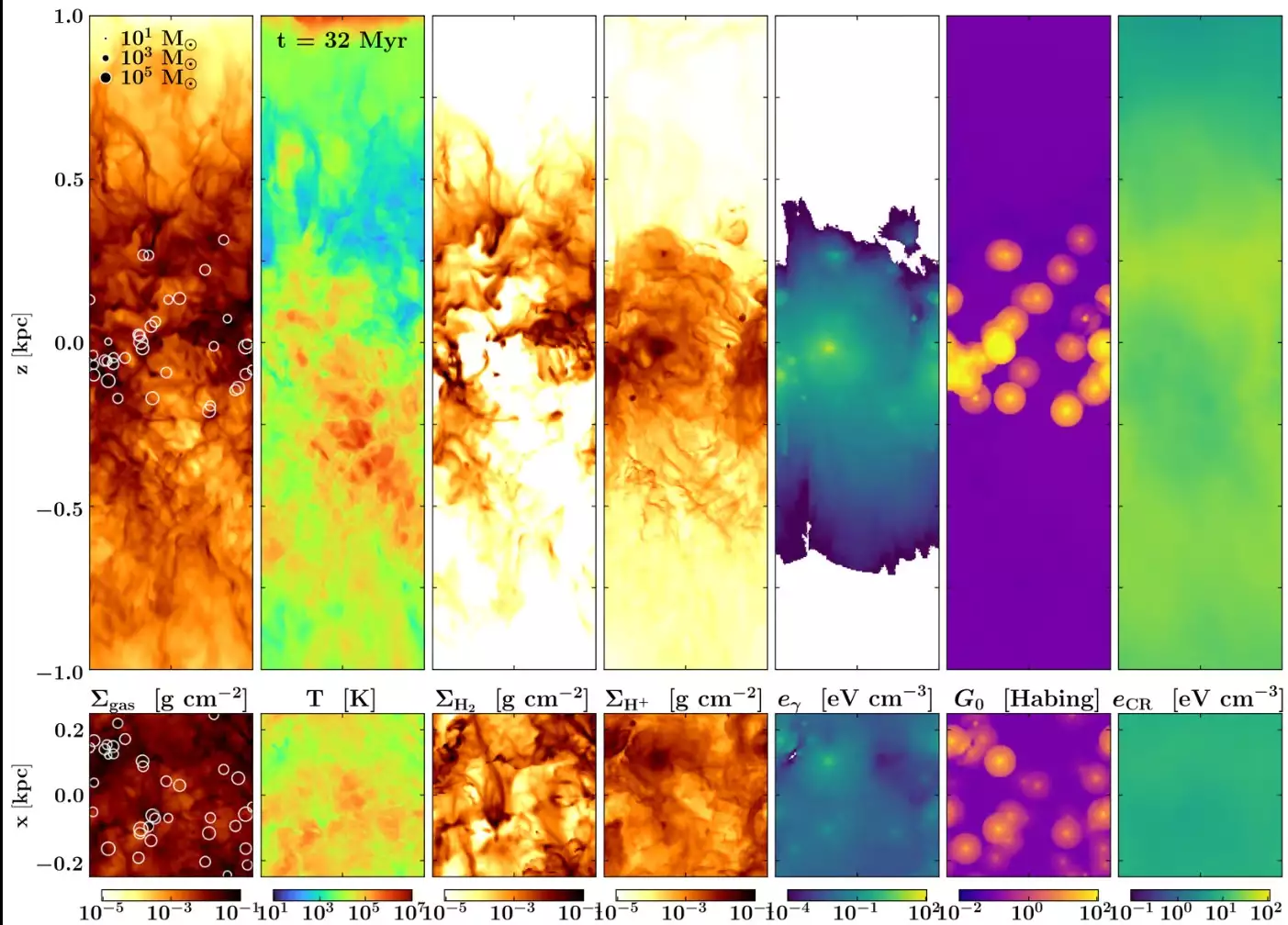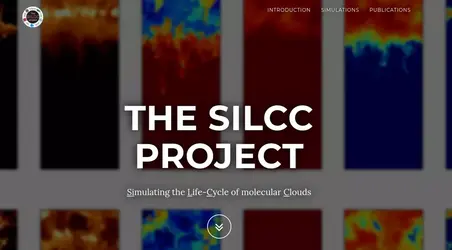
Stratified disk simulation with an initial gas surface density of Σ = 50 M☉ / pc2. The simulation includes stellar feedback in the form of type II supernovae, stellar winds, ionising UV radiation, and cosmic rays, as well as a type Ia supernova background, and runaway stars. Shown are the edge-on (top row) and face-on (bottom row) views of the total gas, ionised, atomic, and molecular hydrogen column densities. Individual HII regions (3rd panel) from active star clusters are visible. Also shown is the density-weighted column of the magnetic field strength (6th panel) and slices through the centre of the simulation box with temperature (2nd panel) and CR energy density (7th panel). The star-forming galactic ISM is concentrated around the midplane. White circles in the 1st and 3rd panels indicate star clusters with different masses. The smallest white circles are individual runaway OB stars. Translucent symbols indicate old star clusters with no active massive stars in them. Stellar feedback generates a highly structured and turbulent multiphase ISM with all its major thermal and non-thermal components.
In addition to my research endeavors in ISM simulation and emission line studies, I am actively engaged in
projects that intersect with machine learning (ML) and research data management (RDM), particularly within the
Collaborative Research Center "Habitats of Massive Stars across Cosmic Time" (CRC1601) and the "Big Bang to Big
Data" (B3D) consortium.
Within these collaborative frameworks, I contribute to initiatives aimed at integrating machine learning
techniques into astrophysical research. I am exploring new ways of ultilising machine learning techniques for
data reduction andi post-processing of the large datasets which are produced by simulations.
Furthermore, I play a role in research data management efforts within both the CRC and the B3D project.
Recognising the importance of adhering to FAIR principles (Findable, Accessible, Interoperable, Reusable) , I am
involved in developing metadata standards for astrophysical simulation data, ensuring that research data remains
accessible and comprehensible for future generations of scientists.
Remember to look up at the stars and not down at your feet. Try to make sense of what you see and wonder about what makes the universe exist. Be curious. And however difficult life may seem, there is always something you can do and succeed at. It matters that you don't just give up.
 I systematically study the impact of supernovae, stellar winds, ionising UV radiation, cosmic rays and runaway
stars on star formation and the capabilities to drive and sustain galactic outflows.
I systematically study the impact of supernovae, stellar winds, ionising UV radiation, cosmic rays and runaway
stars on star formation and the capabilities to drive and sustain galactic outflows.